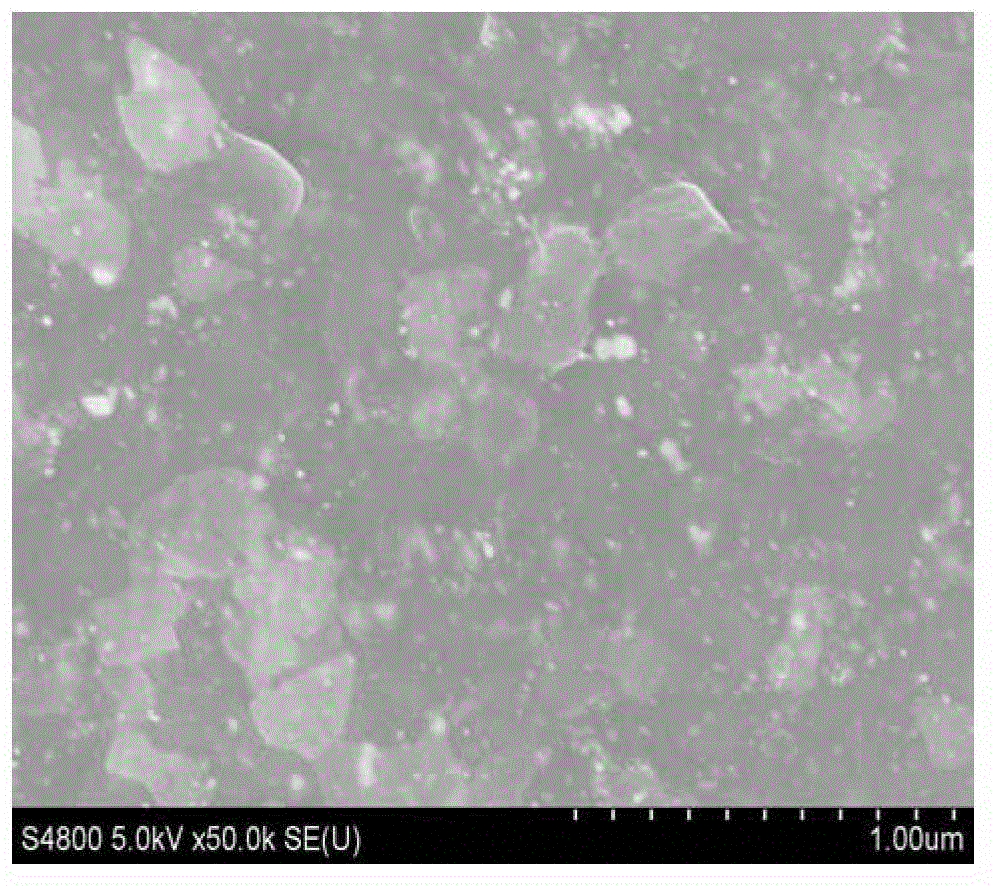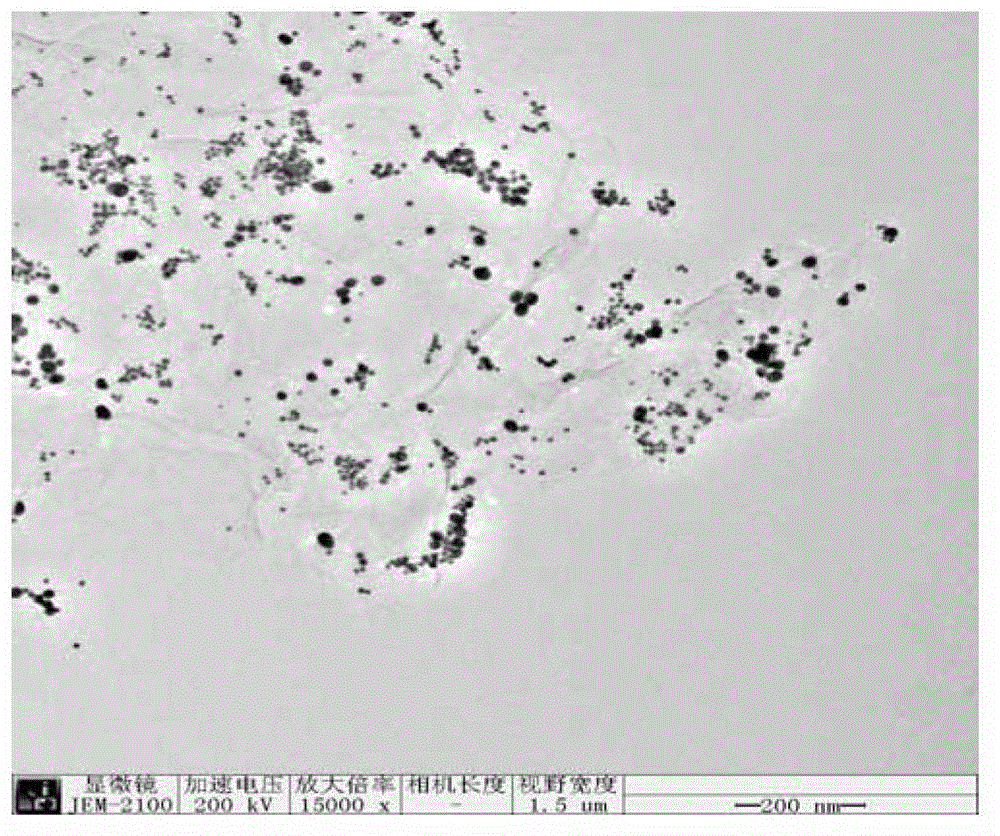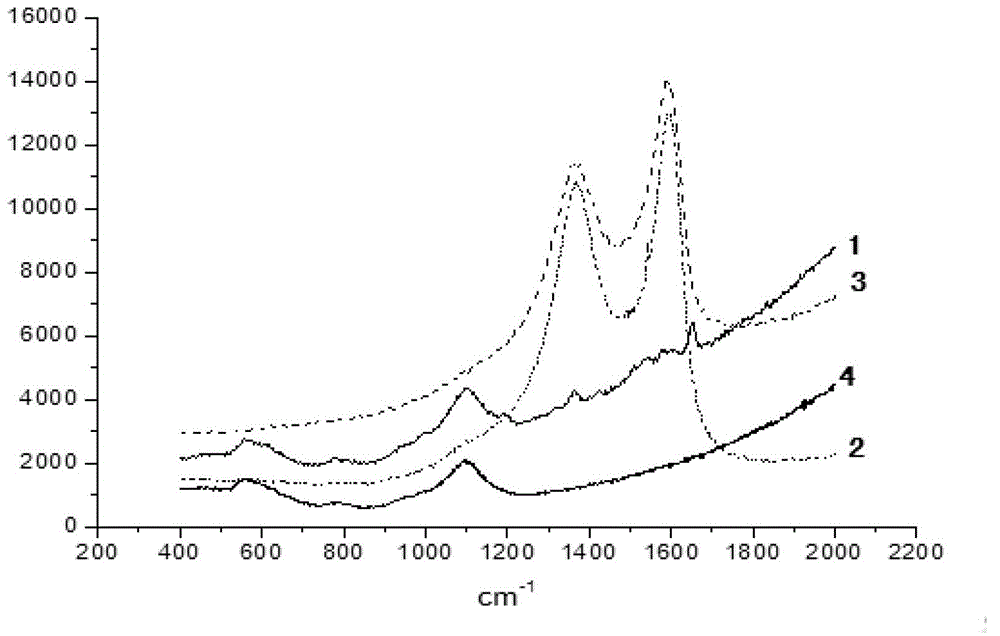Method for manufacturing graphene/gold surface-enhanced Raman spectrum substrate
A surface-enhanced Raman and graphene technology, applied in Raman scattering, material analysis by optical means, material excitation analysis, etc., can solve the problems of lack of precious metal substrates, insufficient utilization of gold nanoparticles, etc., to improve reuse performance, cost reduction, and enhanced performance
- Summary
- Abstract
- Description
- Claims
- Application Information
AI Technical Summary
Problems solved by technology
Method used
Image
Examples
specific Embodiment approach 1
[0014] Specific embodiment one: the preparation method of a kind of graphene / gold surface-enhanced Raman spectrum substrate of the present embodiment is carried out according to the following steps: one, prepare graphene oxide aqueous solution: add 1.2g phosphorus in conical flask Graphite flakes, add 55-65ml of 98% H 2 SO 4 And 6.7~8ml mass percentage content is the phosphoric acid of 85%, then add 8~12gKMnO 4 , reacted for 1.5 to 2.5 hours, moved into a water bath at 35°C for 20 to 24 hours, then added 250 to 300ml of deionized water, and after 10 to 15 minutes, added 30 to 35ml of hydrogen peroxide with a mass percentage of 25% to 30%. Clean the graphene oxide, and then ultrasonically disperse it in the aqueous solution to obtain the graphene oxide aqueous solution, wherein the stirring is continued during the preparation process;
[0015] Two, preparation mass percentage composition is 0.4%~0.6% tetrachloroauric acid aqueous solution and is cooled to 3~4 ℃, preparation m...
specific Embodiment approach 2
[0020] Specific embodiment 2: The difference between this embodiment and specific embodiment 1 is that in step 3, the reflux reaction is carried out under stirring conditions for 1 h. Others are the same as in the first embodiment.
specific Embodiment approach 3
[0021] Specific embodiment three: the difference between this embodiment and specific embodiment one or two is that in step 3, the mass ratio of tetrachloroauric acid aqueous solution and graphene oxide aqueous solution is 36: 1, and the volume of tetrachloroauric acid aqueous solution and sodium citrate aqueous solution The ratio is 19:20.5, and the volume ratio of tetrachloroauric acid aqueous solution to silver nitrate solution is 20:1.8. Others are the same as in the first or second embodiment.
PUM
 Login to View More
Login to View More Abstract
Description
Claims
Application Information
 Login to View More
Login to View More - R&D
- Intellectual Property
- Life Sciences
- Materials
- Tech Scout
- Unparalleled Data Quality
- Higher Quality Content
- 60% Fewer Hallucinations
Browse by: Latest US Patents, China's latest patents, Technical Efficacy Thesaurus, Application Domain, Technology Topic, Popular Technical Reports.
© 2025 PatSnap. All rights reserved.Legal|Privacy policy|Modern Slavery Act Transparency Statement|Sitemap|About US| Contact US: help@patsnap.com



